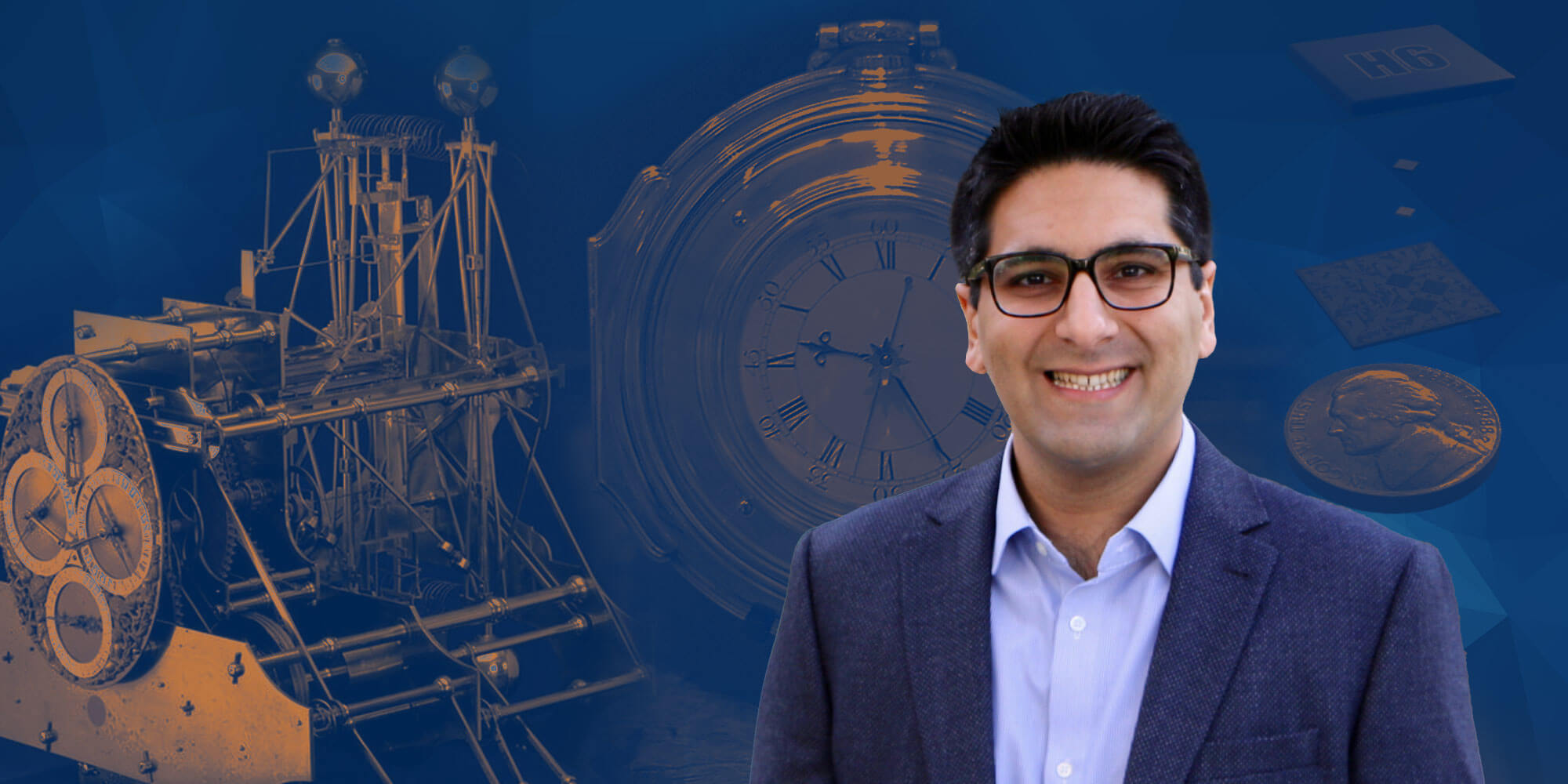In the age of ancient British mariners, the calculated standard of Greenwich Mean Time forever changed the world of circumnavigation in the 1700s by using a shipboard chronometer to help establish position relative to the Greenwich meridian, which represented zero degrees longitude. Now, a research team from the University of Florida has been tasked with creating the 21st century equivalent for use in a wide array of Department of Defense applications.
Funded by a $4.5 million contract from the Defense Advanced Research Projects Agency (DARPA), UF researchers from the Herbert Wertheim College of Engineering are leading the project to produce a microchip-sized tactical-grade clock that maintains accuracy on the magnitude of billionths of a second over time. The research is aligned with DARPA’s ongoing mission to stay ahead of an October Surprise — a reference to the unanticipated 1957 launch of Sputnik by the U.S.S.R. — to ensure ubiquitous national readiness for a potentially global theater of conflict.
“The mission of the project is to create a seamless technology that is the backbone of a lot of other technologies, this one for our defense posture,” said Roozbeh Tabrizian, Ph.D., principal investigator and associate professor and Alan Hastings Faculty Fellow in the Department of Electrical and Computer Engineering (ECE).
“Timing is crucial for all the new technologies, like wireless communication, which relies on access to a very accurate synchronous timing reference,” Dr. Tabrizian said. “Imagine you have two vehicles that are moving driverless towards each other and rely on a common timing reference received from GPS satellite, to calculate their position. Now assume one or both lose access to GPS signal, due to unexpected interference or malignant jamming, and hence they must rely on their own internal clock for safe navigation. Any time-error in their internal clocks could be disastrous considering their high speed.”
Homage to an ancient innovator
This technological challenge has historical roots in a 300-year-old contest, the British Parliament’s Longitude Act, in an era where establishing longitude was the utmost tactical goal. Clockmaker John Harrison provided the innovation through his H1 — H5 marine chronometers, claiming a prize equivalent to several million pounds. The “DARPA H6” project hopes to engineer a super-small, low-power, fieldable clock that will maintain its microsecond precision for at least one week under climatic conditions from -40 to 85 degrees Celsius without GPS calibration.
“Today, GPS denial is the most significant PNT (positioning, navigation and timing) challenge,” said Jonathan Hoffman, DARPA program manager for the H6 project in the agency’s Microsystems Technology Office. “H6 is the spiritual successor of Harrison’s H5, and with it we aim to remove GPS-timing dependency while maintaining signal assurance, pervasive security and high-bandwidth communications. H6 is the clock Harrison would build to solve today’s tactical mission challenge of GPS denial.”
When dealing with a mega-scale ecosystem with several orbiting satellites in interconnected theaters, they must all work in harmony. It’s conceivable that hostile adversaries could render those GPS satellites dysfunctional, crippling defense capabilities by jamming signals. “Think in terms of the movie ‘Independence Day,’” Dr. Tabrizian said.
Also, submarines are incapable of getting GPS signals because electromagnetic waves do not propagate through water. Just like mariners of the 18th century using the first marine chronometers, their global positioning depends on a combination of velocity and time to measure distance, so every second of time must have little deviation at an incredibly infinitesimal scale.
Smaller isn’t just better, it’s needed
Modern technology —satellite-based GPS, computer networks, telecommunications — uses the ‘Atomic Clock,’ first developed in 1949 at the National institute of Standards and Technology (NIST) employing the natural oscillations of atoms in lieu of mechanical devices. Using materials such as Cesium and relying on their specific atomic properties, scientists can produce a very accurate clock — drifting only a few seconds over millions of years.
The problem is the size of the clocks themselves. The latest version of high-precision atomic clocks is still as large as a cabinet, which proves problematic for drones, vehicles, submarines or wearables. DARPA looks to create something the size of a cube of sugar — or preferably a microchip — with low power consumption and exhibiting resistance to extreme environmental conditions like temperature and radiation or phenomenon such as disabling electromagnetic pulses (EMPs).
“We have to employ a different type of physics to scale it down,” Dr. Tabrizian said. “Rather than applying the constants of atomic physics, we rely on the motions and mechanics of the atoms, using MEMS (microelectromechanical systems). Utilizing various forms of resonating feedback, we make a platform that is self-compensating.”
Dr. Tabrizian’s team — which includes Baibhab Chatterjee, Ph.D., assistant professor in ECE — is responsible for manipulating the interatomic dynamics to produce the desired oscillation to stabilize the mechanics of the clock over time, in adverse conditions and against aging.
Evaluating the performance, degradation and aging of the materials will be the primary focus of Hong Gyu Kim, Ph.D., assistant professor in the Department of Materials Science and Engineering at UF. Researchers at the University of Michigan are providing a superior grade of materials the team hopes will yield a packaged product to meet DARPA’s stringent demands.
Originally published on Herbert Wertheim College of Engineering News.
